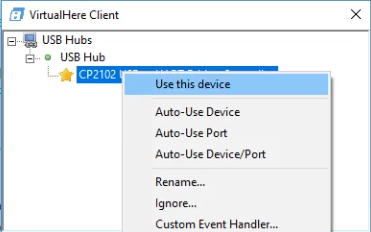- Virtualhere License Keygen
- Virtualhere License Key
- Virtualhere Usb Server Keygen
- Free Keygen For Any Software
- Virtualhere License Crack
Michael,
The great thing about this solution is the low cost: the Raspberry Pi costs somewhere from $35 to $50, depending where you live and where you order it. And a license for using multiple devices with VirtualHere costs $29.00. In the free trial-version you can connect one device and a. This is the license for the VirtualHere USB Server. The NAS edition of the VirtualHere USB Server has a different license. The license can be displayed by passing the -l argument to the server. This will show the license below: VirtualHere USB Server License v2.
I see from searching the forum that renaming the attached USB devices has been a bit of an issue...
Am I right in thinking that, should a VID/PID/Serial number not be provided by the dongle, the server generates them - or works to that effect...?
We've got several (more than 10) which return properties of:
Vendor: AKS
Product: HASP HL 3.25
VID: 0529
PID: 0001
Serial: 81b...e8a0 - 9
All subsequent dongles connected after the 9th are also given the serial number ending in 9 - hence there are clashes and they can't be renamed.
I hope that's clear?
Richard
OK that can be done as there are two nickname modes. The first mode uses the serial to qualify the device and the second method uses the address.
To use the second method:
1. Plug all your dongles into the server
2. start the virtualhere client
3. Open a command prompt and type vhui64.exe -t list
4. Note all the numbers next to the devices, these are the addresses, also from the virtualhere gui note the vendor id and the product id for the HASP device
5. Stop the virtualhere server
6. Edit the config.ini file of the server using vi and add the lineDeviceNicknames=<nickname>,<vendor id in hex>,<product id in hex>,<address>,[<nickname>,<vendor id hex>,...]
e.g

DeviceNicknames=My First iPad,05ac,12ab,114,My Second iPad,05ac,12ab,115
7. Save the config.ini file and restart the virtualhere server.
Michael,
Thanks again for the response...
As a semi-skilled Linux/Unix user, can you run me through the editting of the config.ini file? I'm using a synology DS216SE and currently have WinSCP (on Windows Server 2012) installed to browse through the NAS.
Using that software, I get permission issues trying to save the editted file.
I am aware of basic vi commands, but could do with assistance... can you spare a few minutes to guide me through?
Thanks
Richard
Again, ignore me. Google was my friend (eventually) and i've got root access through PuTTY.
As soon as I can get everyone off the server, i'll give your method above a go.
Thanks
Richard
Virtualhere License Keygen
Log in or register to post commentsVirtualhere License Key
- Download the latest copy of Raspbianand follow the Instructionson how to install it on an SD card.
- This guide assumes you will be connecting to the LAN via ethernet cable rather than wireless.
- Once booted you can confirm the PI's IP by logging onto the console with username “pi” and password “raspberry”. Alternatively you should be able to figure out its IP by looking on your router under the DHCP server name table and connecting via putty.
- Once logged in type the following;
Virtualhere Usb Server Keygen
- sudo apt-get update
- wget https://www.virtualhere.com/sites/default/files/usbserver/vhusbdarm
- sudo chmod +x ./vhusbdarm
- sudo mv vhusbdarm /usr/sbin
- wget http://www.virtualhere.com/sites/default/files/usbserver/scripts/vhusbdpin
- sudo chmod +x ./vhusbdpin
- sudo mv vhusbdpin /etc/init.d
- sudo update-rc.d vhusbdpin defaults
- sudo reboot
Free Keygen For Any Software
- Once it comes back up go to the Windows PC / VM you wish to map the USB device to and download run the VirtualHere USB Client
- Right click USB Hubs and select 'Specify Hubs ...'
- Now add the IP address or Netbios name of your Raspberry PI / Network USB device. Keep the port number the same 'xxxxxxxxxxx:7575'
- Once discovered right click on the USB device you want to use and select Use or Auto-Use Device